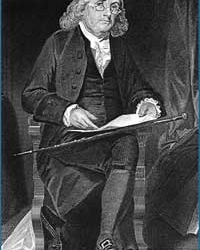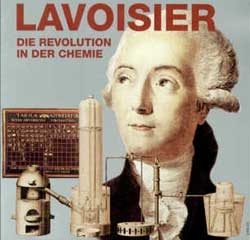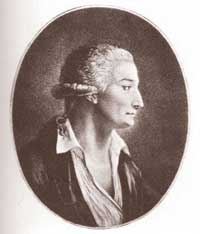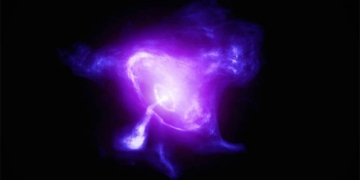Most chemical compounds are still unknown to science. How many new compounds can we create by combining elements from the periodic table?
The universe contains billions of chemical compounds, many of which may occupy just a tiny fraction of existence. Humanity has only identified about 1% of these compounds. Scientists believe that many unexplored chemical compounds could change the future of humanity, potentially helping to eliminate greenhouse gases or leading to medical breakthroughs, similar to what penicillin achieved.
Since ancient times, scholars have been curious about understanding the material world in chemical terms. Since the Russian chemist Dmitri Mendeleev discovered the periodic table of elements in 1869, scientists have uncovered numerous chemicals that shape the modern world. We need nuclear synthesis (colliding atoms at the speed of light) to create the few remaining elements on the periodic table. Element 117, tennessine, was synthesized in this manner in 2010.

The mysterious world of chemistry.
However, to fully understand the vast chemical landscape of the universe, we must also comprehend chemical compounds. Some occur naturally, such as water formed from hydrogen and oxygen. Others, like nylon, are discovered through experiments and produced in factories.
Each type of element is made up of a specific type of atom, and atoms consist of smaller particles, namely electrons and protons. All chemical compounds are formed from two or more atoms. While there may still be undiscovered elements, this is not of great concern. So, how many chemical compounds can we create with the 118 known “elemental Lego blocks”?
A Huge Number of Compounds
We can start by creating all the compounds with two atoms. There are many of these: N2 (nitrogen) and O2 (oxygen) together account for up to 99% of the Earth’s atmosphere. Theoretically, there are 6,903 two-atom compounds, equivalent to the population of a small village.
There are approximately 1.6 million compounds with three atoms, such as H2O (water) and CO2 (carbon dioxide), which is comparable to the combined populations of Birmingham (UK) and Edinburgh (Scotland). When we seek to gather enough compounds with four and five atoms, we are talking about numbers equivalent to the global population. To create all these chemical compounds, we would need to use the universe as a laboratory.
Of course, this is a simplification. Factors like the structure of a compound and its stability can complicate and hinder its synthesis. The largest chemical compound ever created was formed in 2009 and contains nearly 3 million atoms. We are not sure what its functions are, but similar compounds are used to protect cancer drugs in the body until they reach the right location.
However, this isn’t purely a numbers game, as chemistry has rules that complicate everything more than we might expect.
Even the “noble gases” that seem isolated (including krypton, neon, argon, xenon, and helium), which tend not to bond with anything, sometimes form compounds. Argon hydride, ArH+, does not exist naturally on Earth but has been found in space. Scientists can produce synthetic versions in the lab that replicate space conditions. Thus, if we account for extreme environments, the potential number of compounds could increase.
A single carbon atom typically bonds with one to four other atoms, but occasionally, for a brief time, a carbon atom can bond with five others. Imagine a vehicle with a maximum capacity of four people. The vehicle stops at a station, people get on and off, and at some point when people are boarding and alighting, we might see more than four people in the vehicle.
Some chemists devote their entire careers to trying to create compounds that, according to chemical rules, should not exist. Sometimes they succeed.
Another question that scientists grapple with is whether the compounds they are searching for can only exist in space or in extreme environments, such as those with immense heat and pressure, like the vents of underwater volcanoes?
How Scientists Search for New Compounds
Typically, the search for new compounds involves modifications of known compounds. There are two main methods for doing this. One method involves taking a known compound and altering it slightly—by adding, removing, or swapping some atoms. The other method is to perform a known chemical reaction and refresh the starting materials. Both methods are ways of searching for known variables. In other words, they use the same creative approach but hope to yield different results to discover something new.
Returning to the Lego analogy, it’s like building one house, then a slightly different house, or adding new bricks to build another floor. Many chemists spend their careers exploring one of these “chemical houses.” But how can we seek truly new compounds—i.e., unknown variables?
One way chemists learn about new compounds is by looking into nature. Penicillin was discovered this way in 1928 when Alexander Fleming observed that mold in his petri dish inhibited bacterial growth.
More than a decade later, in 1939, Howard Florey found a way to cultivate penicillin in quantities that remained usable with the mold. However, it took many more years until 1945 when Dorothy Crowfoot Hodgkin identified the chemical structure of penicillin.
This was significant because part of the structure of penicillin contains atoms arranged in a square formation, which is an unusual chemical arrangement that few chemists at that time could envision and is very challenging to realize. Understanding the structure of penicillin means we know what it looks like and can search for its chemical relatives. If you are allergic to penicillin and need an alternative antibiotic, you should thank Crowfoot Hodgkin.
Today, determining the structure of new compounds is much easier. The X-ray techniques that Crowfoot Hodgkin pioneered in defining the structure of penicillin are still used worldwide to study compounds. Moreover, the MRI techniques that hospitals use for diagnosing diseases can also be employed on chemical compounds to determine their structures.
However, even if a chemist guesses a completely new structure unrelated to any known compounds on Earth, synthesizing it remains exceedingly difficult. Identifying a chemical compound that may exist doesn’t tell us what its structure is or what conditions are needed to create it.
For many useful compounds, like penicillin, “developing” and extracting them from molds, plants, or insects is often easier and cheaper. Thus, scientists searching for new chemicals frequently seek inspiration from the tiniest corners of the world around us.





















































